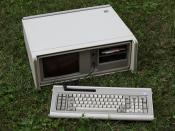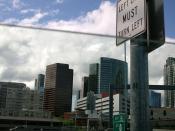1. Analyze the structure of the personal computer industry over the last ten years. How have the dynamics of the PC industry changed?
2. Has Steve Jobs solved the "problem"? What should Steve Jobs do today?
1.
The majority of the general population may think that the PC industry arrived along with Bill Gate's "Windows" package and "Apple's" "I think, therefore iMac" statement, but in reality the modern computer age began in 1971, when Intel built the first microprocessor chip in an attempt to provide more technologically adept "Calculators".
No-one could have foreseen the way the PC would influence and become an integral part of our lives. Technology has advanced at unforeseen rate and this couple with the fact that competition has never been higher means that the structure is constantly changing. However I will attempt to outline the Structural changes that have occurred over the past decade making full use of Porter's Five-Forces Framework for Industry analysis.
Five-Force Framework for Industry analysis.
Michael Porter developed an industry framework model that showed what he supposed the five forces that influenced the "normal" competitor in the Industry. It was originally designed to show the "attractiveness" of an Industry for individual firms in terms of profits, but I feel that it would be ideal to illustrate how the dynamics of the Personal Computer Industry have changed over the last ten years. The general model is shown overleaf.
Diagram of Porter's 5 Forces
SUPPLIER POWER
Supplier concentration
Importance of volume to supplier
Differentiation of inputs
Impact of inputs on cost or differentiation
Switching costs of firms in the industry
Presence of substitute inputs
Threat of forward integration
Cost relative to total purchases in industry
BARRIERS
TO ENTRY
Absolute cost advantages
Proprietary learning curve
Access to inputs
Government policy
Economies of scale
Capital requirements...


